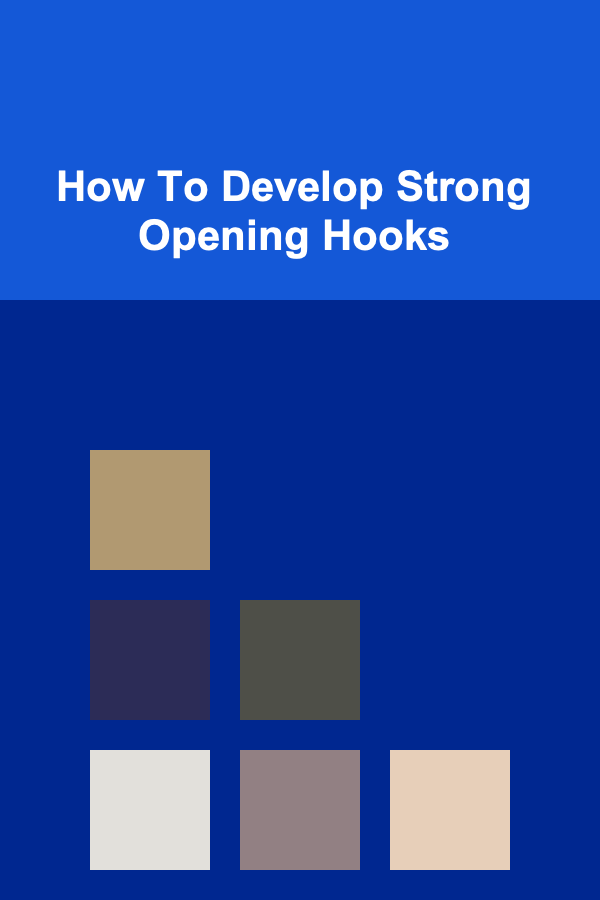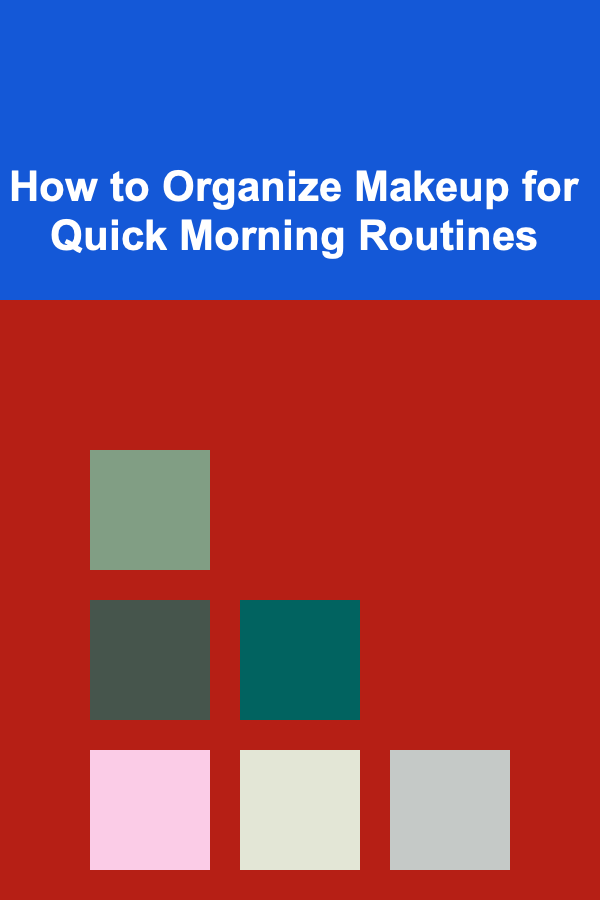
How To Develop Strong Opening Hooks
ebook include PDF & Audio bundle (Micro Guide)
$12.99$7.99
Limited Time Offer! Order within the next:

In the world of writing, the opening hook is the first impression you make on your reader. A strong hook can capture their attention, pique their interest, and compel them to continue reading. But how do you develop a hook that truly stands out? Crafting an effective opening hook is a skill that requires a deep understanding of human psychology, the power of words, and an awareness of your audience's needs. In this article, we'll explore various techniques for creating strong opening hooks that captivate readers and keep them engaged.
The Importance of a Strong Opening Hook
A well-crafted opening hook is essential because it determines whether your audience will stick with you or move on to something else. In a world where content is abundant, attention spans are shorter than ever. You only have a few seconds to grab your reader's attention, and an ineffective or weak opening will lose them before they even get to your main argument.
Consider the following points:
- Engagement: A hook engages readers immediately, making them feel like they must continue reading to learn more.
- Tone Setting: The way you open sets the tone for the rest of the content. Whether it's humorous, serious, or mysterious, your hook can shape the reader's perception of your writing.
- Interest Generation: A good hook intrigues the reader. It sparks curiosity, makes them ask questions, or presents a dilemma they want resolved.
- Appeal to Emotions: Strong hooks appeal to emotions---whether it's excitement, fear, joy, or wonder. When you can connect emotionally, you create a bond with your reader that goes beyond just the words on the page.
Now, let's dive into specific techniques for creating strong opening hooks.
Start with a Provocative Question
One of the most effective ways to hook your reader is by asking a thought-provoking question. This method invites the reader into the conversation, making them feel like they are a part of the narrative. A well-timed question can stimulate curiosity and make the reader eager to find the answer.
For example:
- "What if the world you know is not the world you think it is?"
- "Have you ever wondered why some people succeed while others fail?"
Why This Works:
- Curiosity: Questions tap into the reader's natural curiosity. They want to know the answer, which pushes them to continue reading.
- Personal Engagement: By asking a question, you engage the reader personally. They start thinking about their own experiences, which makes them feel invested in your message.
- A Sense of Mystery: A question can create a sense of mystery, which compels the reader to keep going to unravel the answer.
Use a Bold Statement
Sometimes, the best way to grab attention is to make a bold, controversial, or surprising statement right at the start. This method works well because it forces the reader to pause and consider your words, often challenging their assumptions or expectations.
Examples of bold statements include:
- "The greatest enemy of creativity is not criticism---it's comfort."
- "Everything you've been taught about success is wrong."
Why This Works:
- Shock Value: A bold statement can shock the reader, breaking them out of their mental patterns and forcing them to pay attention.
- Challenging Norms: By challenging commonly held beliefs, you make the reader question their assumptions, sparking deeper engagement with your content.
- Confidence: A strong, declarative opening establishes your authority on the subject. It makes the reader feel that you are someone with an interesting perspective.
Tell a Story or Anecdote
Humans are naturally drawn to stories. Starting with a brief anecdote or personal story can be an excellent way to draw readers in. A well-told story can emotionally engage your audience and set the stage for the information you're about to present.
For instance:
- "I'll never forget the day I almost gave up on my dreams. It was a cold morning in 2005, and everything seemed impossible."
- "On my first day in the wilderness, I made a mistake that nearly cost me my life."
Why This Works:
- Emotional Connection: Stories evoke emotions. By telling a story, you connect with the reader on a deeper level, making them feel invested in your message.
- Relatability: Personal anecdotes or stories make your content feel more authentic and relatable. Readers can see themselves in your situation.
- Pacing: Stories create a natural flow, which keeps the reader hooked. They want to know what happens next, making them more likely to continue reading.
Present a Surprising Fact or Statistic
Surprising or little-known facts can be an excellent way to draw the reader in. The key is to present information that is unexpected or intriguing, which makes the reader want to learn more.
For example:
- "Did you know that over 70% of people have never experienced a moment of true happiness?"
- "In 2019, more people died from selfies than from shark attacks."
Why This Works:
- Curiosity: People are naturally drawn to surprising facts because they challenge our assumptions. Readers want to know more about why this is true.
- Authority: Citing facts or statistics establishes credibility, showing that you have researched the topic and are offering valuable insights.
- Engagement: When you present a fact that catches the reader off guard, they are more likely to keep reading to find out the context or explanation behind it.
Create a Vivid Image
A powerful image can captivate your reader right from the beginning. Descriptive language that paints a vivid picture helps immerse the reader in the world you are about to describe. By appealing to the senses, you create an environment that feels real and compelling.
Example:
- "The sun was setting behind the mountains, casting a golden glow over the vast, empty desert."
- "The cold wind cut through the streets like a blade, and the distant sound of footsteps echoed in the silence."
Why This Works:
- Sensory Appeal: Using sensory details---sight, sound, touch, taste, and smell---makes the opening feel real and vivid, drawing the reader into your world.
- Immersive: Vivid descriptions create a scene the reader can visualize, making them feel like they're a part of the narrative. This increases emotional engagement and keeps them hooked.
- Building Atmosphere: By setting the scene early, you establish the tone and atmosphere, which prepares the reader for the rest of the content.
Pose a Hypothetical Situation
Another technique is to present a hypothetical scenario that challenges the reader's thinking or presents a dilemma. This engages the reader by asking them to consider what they would do in a given situation.
For instance:
- "Imagine you're standing on a stage, about to give a speech in front of thousands. What's the one thing you would fear the most?"
- "What if you could change one decision from your past? Would it be worth the risk?"
Why This Works:
- Engagement: Hypotheticals engage the reader by making them think about what they would do in a particular scenario.
- Personal Connection: The reader imagines themselves in the situation, which creates a personal connection to the material.
- Problem-Solving: Posing a scenario often leads to a question or problem that the reader wants to see resolved, making them continue reading for the solution.
Make a Promise or Offer a Benefit
Starting with a promise can be an effective way to engage your audience right away. If you promise to offer something valuable or solve a problem, the reader is more likely to continue reading to see how you fulfill that promise.
Example:
- "By the end of this article, you'll know how to double your productivity in just one week."
- "I'm going to show you how to master the art of persuasive writing in three simple steps."
Why This Works:
- Expectation: A promise or offer creates an expectation in the reader's mind. They want to see if you can deliver on what you're offering, which keeps them reading.
- Value Proposition: When you present a clear benefit, the reader understands what's in it for them. This increases the chances they will continue engaging with the content.
Conclusion
The opening hook is the gateway to your content. Whether you're writing an article, a blog post, a novel, or a speech, the way you open can make or break your connection with the audience. A strong hook grabs attention, sets the tone, and makes the reader eager to continue. By using techniques like asking provocative questions, making bold statements, telling stories, presenting surprising facts, and offering a benefit, you can create powerful hooks that keep your audience engaged from the first word to the last.
Remember, the key to a strong opening is knowing your audience and understanding what will resonate with them. With practice, you'll develop the skill to craft compelling openings that draw readers in and make them excited to explore your message.
Reading More From Our Other Websites
- [Personal Investment 101] How to Start a Retirement Fund Early in Your Career
- [Metal Stamping Tip 101] Best Checklist for Preparing a Metal Stamping Job Quote for Clients
- [Biking 101] Cycling Injuries 101: Understanding the Causes and Solutions
- [Paragliding Tip 101] Sustainable Flight Paths: Strategies to Minimize Paragliding's Environmental Impact
- [Home Space Saving 101] How to Use Floating Shelves to Add Functional Decor to Your Walls
- [Personal Care Tips 101] How to Use Aftershave as Part of a Full Beard Grooming Kit
- [Organization Tip 101] How to Organize a Small Home Gym Effectively
- [Home Family Activity 101] How to Create a Family "Dance Off" Competition
- [Personal Care Tips 101] How to Use Face Oil to Brighten Dull Skin
- [Personal Care Tips 101] How to Use Antiperspirant to Stop Body Odor

How to Design a One-Page Website That Keeps Visitors Engaged
Read More
How to Design Your Dream Kitchen Without Spending a Fortune
Read More
How to Organize Makeup for Quick Morning Routines
Read More
How to Use Lighting to Enhance Your Home's Decor Without Breaking the Bank
Read More
What Are the Best Tips for Organizing Your Jewelry Collection?
Read More
How to Conduct Market Research Using ChatGPT
Read MoreOther Products

How to Design a One-Page Website That Keeps Visitors Engaged
Read More
How to Design Your Dream Kitchen Without Spending a Fortune
Read More
How to Organize Makeup for Quick Morning Routines
Read More
How to Use Lighting to Enhance Your Home's Decor Without Breaking the Bank
Read More
What Are the Best Tips for Organizing Your Jewelry Collection?
Read More